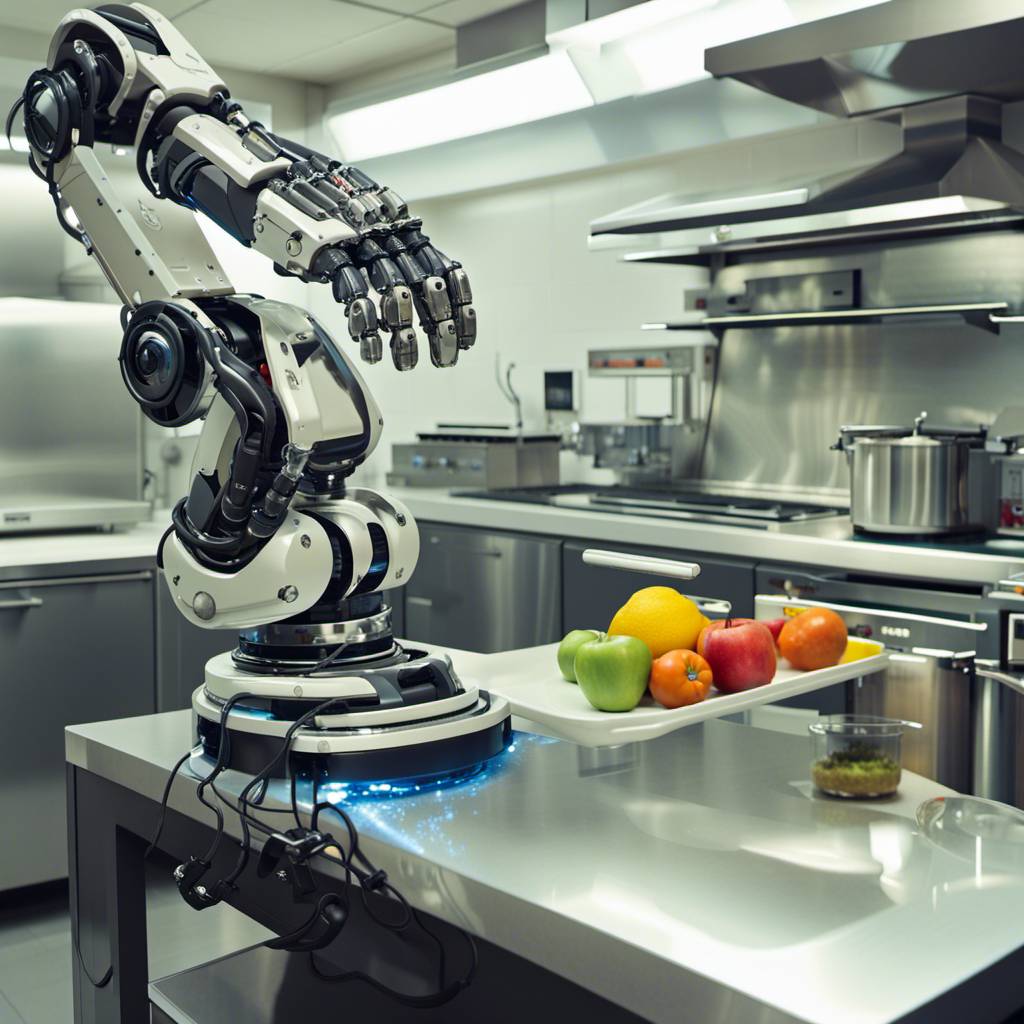In an exciting development from the University of Cambridge, a team of researchers have successfully trained a robotic “chef” to learn and replicate dishes by watching cooking videos. This advancement could potentially revolutionize the culinary world and bring us closer to a future where our meals are prepared by robotic chefs.
Cooking has always been a complex task that robots have struggled with, despite their portrayal in science fiction. While there have been attempts to create prototype robot chefs, their skills and abilities have fallen short when compared to human cooks. However, this new breakthrough from the University of Cambridge may pave the way for more effective and affordable robot chefs in the future.
The research team sought to train the robot chef in a similar way to how humans learn – through observation and progressive learning. They prepared a series of eight simple salad recipes, filming the process for the robot to learn from. Utilizing a publicly accessible neural network, the robot was trained to identify various objects and actions involved in cooking.
Using computer vision techniques, the robot analyzed each frame of the cooking videos. It was able to identify objects such as fruits, vegetables, knives, and even the human demonstrator’s body parts. By observing the ingredients and actions, the robot could discern which recipe was being prepared. It also demonstrated an impressive ability to detect slight variations in recipes, correctly identifying them as variations rather than completely new recipes.
The robot’s performance was impressive. Out of the 16 videos it watched, it correctly recognized the recipe 93% of the time, despite only detecting 83% of the human chef’s actions. Additionally, it successfully learned a new salad recipe, adding it to its growing repertoire.
Grzegorz Sochacki from Cambridge’s Department of Engineering commented on this achievement, saying, “It’s amazing how much nuance the robot was able to detect. These recipes aren’t complex – they’re essentially chopped fruits and vegetables, but it was really effective at recognizing that two chopped apples and two chopped carrots is the same recipe as three chopped apples and three chopped carrots.”
However, it’s important to note that the videos used to train the robot were not like the fast-paced, visually engaging food videos often found on social media platforms. These types of videos would confuse the robot due to quick cuts and visual effects. For instance, if a human demonstrator held a carrot in their hand without showing it entirely, the robot would struggle to identify it.
As these robotic chefs become more proficient at identifying ingredients in food videos, they could potentially use platforms like YouTube to learn a broad range of recipes. The researchers envision a future where robot chefs can utilize online resources to expand their culinary skills and knowledge.
This remarkable study has been published in the journal IEEE Access. As advancements in electronics, computers, programming languages, and coding continue to evolve, we may soon find ourselves living in a world where robots are not only our companions but also our personal chefs. This development is not only exciting for tech enthusiasts but also for those who dream of coming home to a meal prepared by their very own robot chef.
In related news:
• Robots that learn by watching ‘how-to’ videos could soon take over household chores
• AI experts predict automation of many chores by 2033
• Culinary therapy: Confidence in cooking can boost mental health
